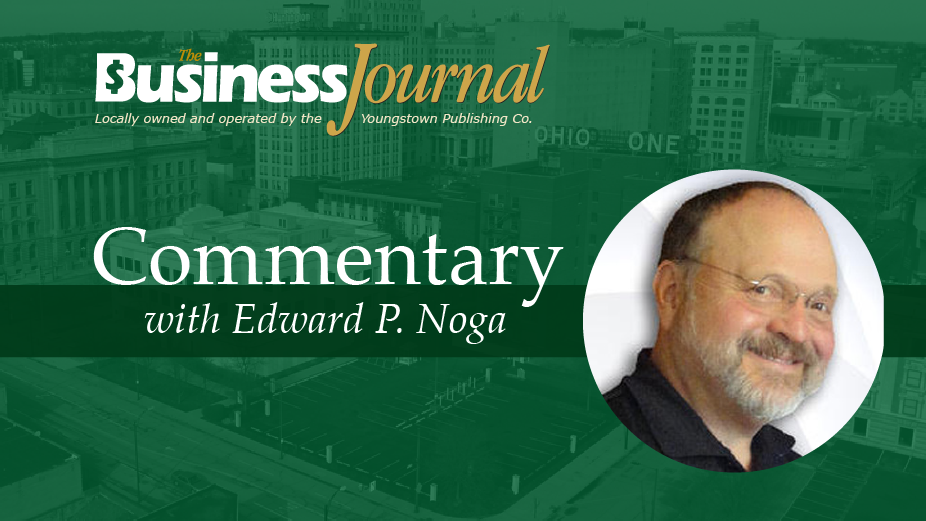By Edward P. Noga
I am not a golfer. Even so, I occasionally watch the closing rounds of one of the many golf tournaments that captivate our nation (and world).
I was interested in hearing a comment recently from one of the golf pros about how eerie it is not to have the sights and sounds of the tournaments as some of golf’s best players compete.
The hush of the crowd as a potentially match-winning putt begins to roll is often followed by a thunderous acclamation of a birdie as the player increases his lead or takes the lead. And then there is the sea of people who crowd in as close as they can to see the intensity and concentration of the players.
These days, networks have added pre-recorded sounds and cut out figures in sports that have stadiums. And sections of large stadiums have now become advertising opportunities.
We also have noticed that the camera operators at such events have narrowed their camera focuses to concentrate more on the events rather than the crowds. We’re doing our best with the pandemic limitations.
One can appreciate that technology has helped us to cope and participate somewhat in news, sports, community and arts events even as they come to us virtually.
I am reminded of the 1984 baseball movie, “The Natural,” that captivated movie audiences with Robert Redford in the starring role as baseball player Roy Hobbs. The movie was based on the 1952 novel by Bernard Malamud. I remember seeing it and being part of an otherwise typical mostly quiet movie audience who stood and cheered when Hobbs hit the game-winner.
I also remember seeing a shower of popcorn as some patrons broke into unexplained euphoria. I remember hearing that to cut costs, the movie producers and directors planted cut out characters in parts of the stadium to fill it and the screen. Later, when I bought a copy of the video cassette (I know, I know I am dating myself because now it’s on Netflix) I watched it and looked for the scenes with the cardboard cutouts. There they were, as big as life. (Did I just write that?)
In recent years, extremely life-like cutouts of famous people have popped up as photo-op props. You can get your picture taken with all sorts of famous people, including movie stars, political leaders, astronauts and even Pope Francis!
Speaking of the smiling pope, there have been numerous stories of faith communities and faith leaders putting cutouts in worship spaces to simulate their congregations. Whether a synagogue, a church, a mosque or even an outdoor religious gathering, the “congregation,” albeit cardboard, exemplifies our creativity and our yearning for those represented by fabrication.
Who knows, there may be a chair or two or more at the Thanksgiving table this year that might have a “guest” who won’t be eating or conversing or taking home a carry-out.
This Thanksgiving we can be grateful for the many real people who have walked the pandemic journey with us. I don’t even want to try to list them because it would probably take a special edition of this journal to cover all of them.
Make no mistake, for as long as our list would be, there is probably an equally long or longer list of people we don’t know who have been on the journey with us (like the maintenance person who checked my furnace the other day and replaced the filter for the winter). Then there is the list of those no longer with us but who have helped to contribute to who we are and where we get our support and love.
The Pilgrims and those who participated in the first Thanksgiving didn’t know what cardboard was, let alone cardboard cutouts. They did, however, know how important it was to be grateful. Two years ago, someone shared a book with me entitled The Little Book of Gratitude by Robert A. Emmons. The subtitle was Create a Life of Happiness and Well Being by Giving Thanks.
Maybe we need a cutout at our Thanksgiving table or in the room where we share the turkey, sweet potatoes, stuffing, pumpkin pie and a glass of wine and whatever else marks our observance. With guidance from the medical community, our observance might be quite a bit smaller this year. But it will be no less important.
Today our current is marked by creative and colorful masks that are part of everyday life. Social media and news organizations and publications are even highlighting and chronicling our face coverings.
Can you imagine the collage of cardboard representatives that can help us mark a holiday that will definitely be different this year but no less important! Be grateful for all those watching over us and our world with a sincere desire and the energy and expertise to eventually set aside the cutouts for the real thing.
